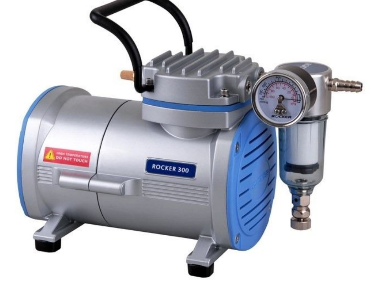Vacuum pumps are used to remove air and other vapors from a vessel or manifold. Weak points in containers or systems under vacuum can create implosion or explosion hazards, and cause injury by violently spraying glass and hazardous materials. An example of this is an incident that occurred at the University of Pennsylvania resulting in an explosion and fire.
The most common uses of vacuum pumps in laboratories are on rotary evaporators, drying manifolds, centrifugal concentrators, acrylamide gel dryers, freeze dryers, vacuum ovens, tissue culture filter flasks and aspirators, desiccators, filtration apparatus and filter/degassing apparatus.
Choosing the appropriate vacuum pump for your work and putting the necessary hazard controls in place is important to maint ain health and safety. Refer to the Vacuum Pump Safety Focus Sheet to help you select the right type of vacuum pump and set it up safely. In addition to specifying the different types of vacuum pumps, it gives guidance on best practices for setting up the pump trap, collecting waste generated by the pump, and appropriate locations for pumps in your workspace. Vacuum pumps should always be plugged directly into a power receptacle, which is just one factor in choosing its location.
ain health and safety. Refer to the Vacuum Pump Safety Focus Sheet to help you select the right type of vacuum pump and set it up safely. In addition to specifying the different types of vacuum pumps, it gives guidance on best practices for setting up the pump trap, collecting waste generated by the pump, and appropriate locations for pumps in your workspace. Vacuum pumps should always be plugged directly into a power receptacle, which is just one factor in choosing its location.
Use the operations checklist to develop your protocols for pump usage in your workspace, and make sure that your pump is adequately maintained to keep it running safely.
For questions about vacuum pumps, contact the Lab Safety team.